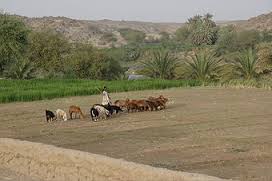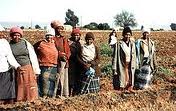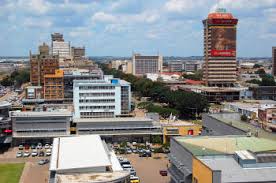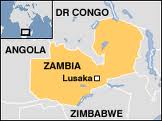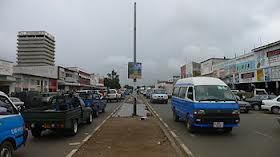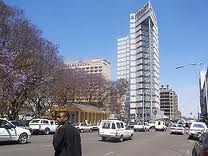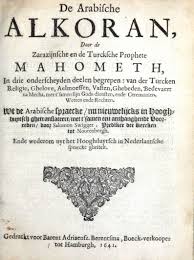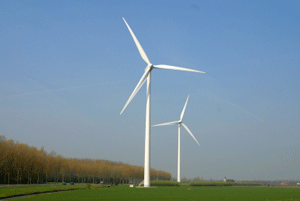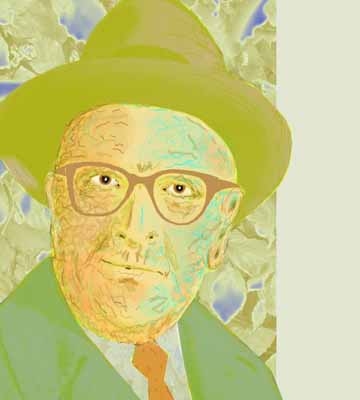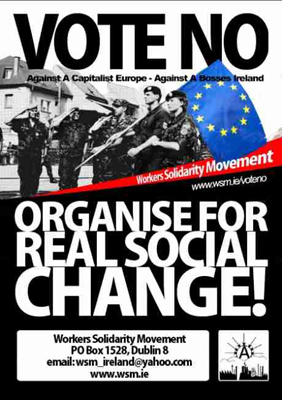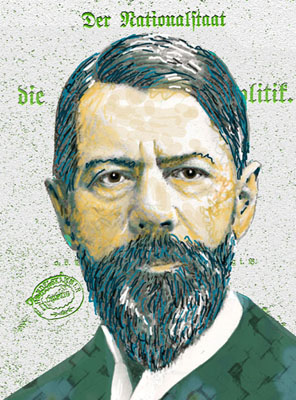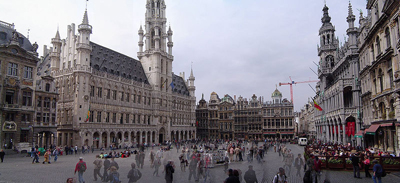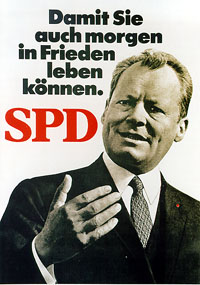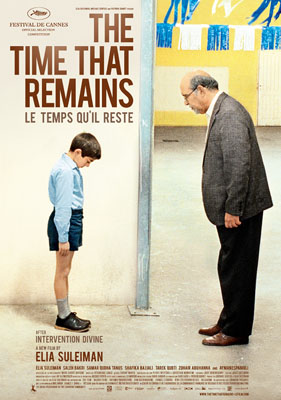Land And Agrarian Reform In South Africa: Caught By Continuities – DPRN Six
Introduction
Land and agrarian reform is often implemented with a view to breaking with the past, particularly by transforming ownership of land and its uneven distribution. The post 1994 land and agrarian reform in South Africa began with a similar agenda. In fact land reform was launched and implemented even before Apartheid was dissolved and the new ANC-led government took control. The Apartheid government under F.W. De Klerk initiated some kind of limited land reform during the period from 1990 to 1993.
In March 1991, De Klerk’s government repealed the 1913 and 1936 Land Acts. In November of the same year it appointed an Advisory Committee on Land Allocation (later renamed as the Commission on Land Allocation). The Commission made recommendations on state land disposal and the restoration of land to those disposed of formal land rights. This happened first in Natal, where dispossessed communities in Richards Bay (van Leynseele and Hebinck, 2008), Roosboom, Charlestown and Alcockspruit got their land rights formally restored in the years 1992-93 through this process (Walker 2004). The strengths and weaknesses of the pre-1994 land reforms were replicated post-1994 in the form of a lack of ‘coherent state procedures and institutional inadequacies’ to manage the land reform process (Walker 2004; 2005).
This paper explores the institutional dynamics by pursuing the argument that contemporary land reform policy and practices are characterised by continuities, rather than by discontinuities. Given the radical policy discourse of Reconstruction and Development, political and economic transformation, one may expect more discontinuities to occur than continuities. The shift from the early emphasis on human rights to paternalism and ‘productionism’ (from LRAD to SLAG) is testimony of what we would brand as continuities. The assumption of our investigation is that during Apartheid land use on white-owned farms was production and market oriented. Discontinuities no doubt occur; towards the end of the paper we will provide a few examples that show that land once designated for white ownership and ‘commercial agriculture’ is now being redeveloped into land owned by black people who by and large use the land – quoting an informant one of us spoke to in November 2007 in the Eastern Cape – ‘the African way’.[i]
The organising notion of continuity (and discontinuity) is useful for an analysis of changes over time. Continuity refers to the state of uninterrupted flow or coherence, or the property of a continuous and connected period of time (Oxford English Dictionary). Synonyms are persistence, enduringness, durability, lastingness, strength or permanence by virtue of the power to resist stress or force. The continuities that will be explored in this paper relate to the agricultural expert system that has gradually evolved in South Africa and which plays a prominent role in the design of land reform. The persistence of continuities would then indicate the extent to which dramatic transformations of the institutional infrastructure in agriculture have occurred. Historical analysis allows us to underline the continuity of prescriptions and modes of ordering in the past and present. Distinctions between the pre-apartheid, apartheid and post-apartheid periods belie the existence of important continuities.
The setting is the Eastern Cape Province, notably the regions formerly known as Ciskei and Transkei. The case material to underline the argument of continuity rather than discontinuity are entrenched in the prescriptive policies of the state with regard to land use as well as in the multiple responses of land users. Such policies are largely informed by agricultural expert opinions with regard to land use such that they have helped to create and order South Africa’s agrarian landscapes. The Glen Grey Act of 1894 evolved into Betterment Planning practices dictating and attempting to change land use patterns. Current land reform policies aim to prescribe similarly land use by paternalistically fixing land reform subsidies to forms of land use that fit into the category of ‘commercial agriculture’. Like James (2007), we intend to pursue the provoking argument that the current Department of Land Affairs (DLA) and National and Provincial Departments of Agriculture are rather similar to their Apartheid era predecessors, the Department of Native Affairs and the Native Agricultural and Lands Branch.
Land reform experiences reveal contestations over such prescriptions because of generic solutions, sometimes casted in inflexible ways, incompatible and out of sync with the desires and needs of people. Emergent land use patterns on land reform farms vary enormously, ranging from betterment-like situations to land for settlement. Elements of betterment-like planning can be found in the proposals in the Chatha restitution settlement and Dwesa-Cwebe Development Plan for the ‘rationalization’ of land use in the communal areas outside Dwesa-Cwebe. The continuity lies in the normative role of development planners, agrarian scientists and the thinking in terms of man-land ratio (or perceived economic units).
Through examining past and present conflicts between the state and peasantry in South Africa, and the institutions and social actors that bridge this divide, the paper argues that the cores of such conflicts are knowledge contestations, particularly between the state’s bureaucrats, the experts they hire and local people.
We warn, however, against the dangers of an analysis solely focused on experts (i.e. consultants, academics, policy makers); one should not ignore the roles of other social actors. Experts may attempt to direct and prescribe the course of events (and these often occur in situations that can be understood as intervention), but they certainly do not have the power to structure (or determine) the behaviour of a range of other social actors. Agency is not simply embedded in the expert system, but is situated as well among social actors such as farmers, land users, land reform beneficiaries and extension agents (Long 2001). A range of studies have demonstrated that they contest and rework such intervention programmes. Long (ibid.) explored these processes and pointed at the continuous adaptation, struggle and meshing of cultural elements and social practices (see also van Leynseele and Hebinck 2008). Technology development and transfer necessarily involves an interface between the world of designers and experts and that of the users (Hebinck 2001). Focusing on how farmers and other social actors redesign external prescriptions and thus how adaptations take place, may enable us to explain why certain modes of utilisation proposed by experts are often contested by local people (Arce 2003; Van der Ploeg 2003; 2008; Mango and Hebinck 2004).
In a concluding note, ideas about alternative scenarios will be explored. It is imperative that such alternatives need to take into account the continuities in expert thinking within state institutions.
Agricultural expert systems and knowledge
Experts, expert knowledge and networks play a key role in contemporary agriculture. Likewise they are key to the implementation of land reform, certainly so in situations like South Africa where consultants have come to play an important role in the design of business plans for land reform project and their beneficiaries.
Giddens (1990: 27) defines an expert system as ‘a system of technical accomplishment [and] professional expertise that organises large areas of the material and social environments in which we live today’. Besides size, more importantly perhaps is that the agricultural expert system represents a set of practices by which the development of the agricultural sector is directed: problems are identified and solutions forged, proposed and implemented. Knowledge (and thus the control over what constitutes knowledge) plays a key role in any expert system. Van der Ploeg (2003: 229) in his analysis of Dutch agriculture adds another specific characteristic to agricultural expert knowledge. It does not concern so much ‘agriculture as it is now, let alone (recent) agricultural history. The expertise involves agriculture as it is expected to look in the future’. An expert system thus defines the trajectory and means to arrive at this future. This provides experts with the power to create ‘the rules that define and authorise participants’, and which distinguish them from those who are in their way. The expert system embodies the knowledge and expertise that imply and define agency: rules, participants and resources. Needless to say, such knowledge is neither neutral nor objective, but rather normative and regulatory; it has the power to identify (and label accordingly) winners and losers, and thus the power to order the agricultural sector in South Africa, now and in the future.
The agricultural expert system in South Africa consists of an extremely condensed set of networks linking together state structures at national, provincial and municipal level, various professional organisations and individuals. Most experts have in common that their past training has been in Faculties of Agriculture (notably of the Universities of Pretoria, Stellenbosch, Free State, KwaZulu-Natal and Fort Hare), and that they gained experience in state-funded institutions such as the Agricultural Research Council. In addition, most experts have a background in either commercial, large scale agriculture or in so-called home-land agriculture.
To pursue a critical analysis of knowledge and experts, the analysis has to take into account two ingredients that are situational One of analytical ingredients is the positioning of expert knowledge within the political project of the state and society. The second is the particular way in which agrarian science has evolved.
The development of an expert system cannot be separated from political and economic relations and broader questions of political economy. State interventions in agriculture in South Africa, for example, have often related to attempts to address scarcities of labour and land. A substantial body of literature has addressed this dimension of the agrarian question (of capital and labour) in South Africa (Bernstein 1998; 2007; Ntsebesa and Hall 2007; Atkins 2007; James 2007). This literature, however, does not really address the political economy of knowledge and has ignored the key role agricultural knowledge plays in development. A relatively recent body of STS literature (Science, Technology and Society studies) has engaged with the relationship between politics, knowledge and power. Scientists, because of their position as network builders, play a key role in the strategic positioning of science in society and politics. Latour’s (1983) treatment of the production of knowledge by Pasteur and his group is interesting in that he shows that experts like Pasteur often succeed in deriving political positions and influence from their scientific breakthroughs. The Green Revolution would not have been there without the political and scientific prestige of Norman Borlaugh (Hebinck 2001). Nor would Agroforestry have been what it is now without Pablo Sanchez, the founding father of the World Centre for Agroforestry (ICRAF). Beinart (2003: 336) calls the development of the expert system in South Africa ‘unilateral [state] interventions and centralised planning’. Beinart argues that, particularly during the early years of the 20th century and after that time, the agricultural expert system became associated in rhetoric and policy with attempts to forge a unified and modern white nation. Heinrich Sebastian Du Toit, a highly committed senior official in the Department of Agriculture, played a key role in the construction of an agricultural expert discourse and practice. Du Toit had travelled worldwide and his experiences convinced him that the advances of science should be incorporated in farming, which would both stimulate production and secure conditions for a proper reproduction and till the land in difficult and marginal environments. These advances needed to spread not just to white farmers but specifically to the mass of white, Afrikaner landowners. Du Toit felt that many of them were bypassed by the current department’s research and publicity (Beinart 2003: 237). Agricultural development, experts and expertise, Afrikaner nationalism and modernisation became intertwined. The frame of reference for most agricultural experts thus became the white settler farm whose social and cultural environment was familiar to them. Black farming or peasant agriculture was virtually absent or unknown to agricultural experts, despite the fact that in the early years of interventions some experts drew on peasant farming techniques.
The positioning of expert knowledge vis-à-vis the state has allowed experts, whether academics, retired academics acting as consultants or former officials of Departments of Agriculture to give directions to pre-apartheid, apartheid and post-apartheid agrarian policies and simultaneously shape the domain of agrarian sciences. The importance of this is that such knowledge generation and institutional culture has produced the current crop of experts but continues to train the next crop of experts, thereby reproducing expert practice and knowledge.
The South African expert system participates in this way in a political project that needs participants (in this case land reform beneficiaries and willing sellers) and supporters (political organisations, the broader public, key state apparatuses such as the Ministry of Finance) and which has as its main objective to connect the many different projects of the landless, the poor, the upcoming black entrepreneurs, corporate agribusiness groups, banks, merchants, consumers and last but not least the polity.
The second ingredient for a situational analysis of expert knowledge is that agrarian sciences and knowledge over time have moved from a local perspective and localised practice to a particular institutional practice. During the early years of agronomy, for instance, its practice was clearly embedded in the context of and in close relationship with the everyday practices of farming. However, it became more and more disconnected from that daily practice and gradually moved from the field to experimental farms, research stations and university farms and laboratories. Van der Ploeg (2003) understands such a transformation as the processes of ‘scientification of agriculture’ which drives many of the current externalisation and commoditisation processes in agriculture. Latour (1983) singles out an essential element of that process in Louis Pasteur’s approach to find a medical solution to anthrax in France: decontextualisation. This signifies that solutions for problems such as animal diseases, pests, and low crop yields and so on are produced in environments that can be controlled for influencing factors. Beinart (2003) pointed at the networked nature of the development of South African science regarding farming, conservation, soils, plants, animals, etc. Networking – travelling abroad and inviting peers from the UK and USA to South Africa – has played a major role in separating expert knowledge from local environments, allowing the decontextualised importing of concepts and notions of farming that had developed in very different conditions.
Decontextualisation and scientification together have led to a scientific practice that is largely (perhaps totally in certain situations) alienated from the local cultural, social, economic and political situation. Van der Ploeg (2003), while pointing at the tight relationship between such sciences and policy environments, argues that empirical realities are reduced to virtual, non-existing realities, often expressed in aggregate terms such as averages.
Prescriptions and continuities: From the Glen Grey Act to land reform
Contemporary expert recommendations on African agriculture echo 19th century policies. The Glen Grey Act (Cape Act No. 25 of 1894) is generally known as a piece of legislation aimed at limiting the amount of land Africans could hold. It introduced the ‘one man one plot’ principle and most of its measures were extended to the former Ciskei and Transkei areas.[ii] The Act is one of the first examples of regulating land use by fixing size (about 3 morgen in the former Ciskei and about 5 and larger in the former Transkei). Limiting the size of plots ensured that landholders had to seek additional income off-farm and making the plots indivisible destined all but the eldest son of the landowner to find off-farm livelihoods (Yawitch 1982; Beinart 2003). Land surveyors and agricultural officers subdivided the land into three land use categories, each with specific tenure arrangements: 1) land allotted for crops, 2) land intended for residential purposes and 3) commonage. The first two categories were allocated in combination under a quitrent arrangement. Title deeds were issued and access was secured through annual payments.[iii] The remaining land was designated as ‘commonage’ for cattle to graze, for people to collect firewood and other services the environment provided. All this was specified on the title deeds. This neat, explicit and sometimes exclusionary distinction provided in the eyes of the colonial expert system an opportunity for the viable cultivation of crops and livestock. The quitrent and payments served the purpose of securing notions of property as individually-owned, as well as drawing people into the monetary economy. Raising taxes also increased rural Africans’ need for cash, further pressing them to seek paid employment (Lewis 1984; Bundy 1988; Switzer 1993). This pattern of land use and institutional arrangements contrasted starkly with peoples’ previously existing patterns of settlement and use of the landscape (Bundy 1998, Schapera 1937). The aspect of individual land tenure in the Grey Act cannot be generalised, however.
Until the early 20th century, the state had only actively intervened to address access to land and labour. In the early decades of the 20th century, however, the state began to aggressively support white-dominated agriculture: ‘Between 1910 and 1935, there were 87 Acts passed … rendering permanent assistance to farmers’ (Mbongwa et al. 1996: 48). These policies institutionalised a marketing policy aimed at raising agricultural prices well above competition level, assisted poorer whites in their attempt to rationalise their enterprises economically, and provided agricultural credit. As part of this support, the state began to develop an agricultural expert system through the establishment of a National Department of Agriculture in 1924 as well as a network of agricultural colleges and research stations in the country (Wilson 1975; Beinart 2003). Experimental farms and training colleges were established at Elsenburg (in 1917) in the Western Cape, Cedara in Natal, Fort Cox Agricultural College (early 1930s) in the Ciskei and Tsolo Agricultural College in the Transkei. The Tomlinson Report (1955: 74) narrated that the ‘first Bantu agricultural school was only founded in 1905 (in the Transkei) and a special technical agricultural service in the Native Affairs department – the Native Agricultural and Lands Branch – was only brought into being in 1929’. Previously, the report mentions, various commissions had reported on destructive agricultural methods and their recommendations to teach the natives to use their land efficiently. The Faculty of Agriculture of University of Fort Hare played – and still does – a role in the implementation of these programmes by training students to advice people living in communal areas about modern farming (Morrow 2007).
This expert system began to turn its eyes on the ‘Native Areas’ where land degradation in the form of soil erosion, denudation, and drying-up of springs began to receive governmental attention of the South African Government. The 1932 Native Economic Commission called for a development programme to teach Africans how to use their land more economically, and to halt resource degradation (Yawitch 1981). The 1936 Native Trust and Land Act No 18 provided the legal framework for the government interventions known as Betterment planning, involving the reclamation and rehabilitation of the ‘Native Areas’. The ostensible key concern of early (1936 to 1950) betterment planning was to protect and rehabilitate the natural resource. Government introduced policies aimed at limiting and culling livestock numbers to address perceived denudation of the rangeland, and engaged in the construction of contour banks in an attempt to prevent soil erosion. Areas were designated as residential, arable and grazing land, and rural Africans were instructed (and often forced) to move into the designated residential areas. Implementation of the planning started in the late 1930s but was subject to much resistance, thus proceeding rather slowly (Switzer 1993; McAllister 1989; de Wet 1987; 1989; Beinart 2003; Hendricks 1989). While resistance was widespread, there are also examples of villages accommodating betterment ideas (i.e. rotational grazing) and embracing some other aspects (i.e. provision of schools, roads and other facilities).
While a certain variant of a Malthusian view may underlay the conception of betterment planning as a check on environmental degradation (Trollope 1985; Laker et al. 1975; Tomlinson Commission 1955), population dynamics (rather than population growth per se: Switzer 1993) were the context for environmental problems. Labour migration and land tenure had pushed rural people off the land rather than facilitating their continued presence on the land, which would allow them to care for the land and monitor degradation (see Hebinck and Monde 2007).
Experts like Trollope (1985) maintained that soil erosion is the outcome of the interplay between a series of factors such as tenure, population pressure, lack of education and skills, and a ‘complete lack of sound scientific background’. Together these factors are seen to limit the understanding, acceptance and implementation of new and improved farming methods. The Laker Report (Laker et al. 1975) explains soil erosion repeatedly as incorrect land use and overstocking. Together with poor soils and inadequate moisture, yields are poor and can only be low. Stocking rates should be brought in line with prevailing veld conditions.[iv] Contestation of the restrictions placed on livestock numbers may be explained by contrasting views about carrying capacity and the significance of cattle. Limiting stock numbers and subsequent measures to cull were instigated by agricultural experts’ view that overstocking ruined the land and weakened cattle. The widely used system of kraaling among both white and black farmers was seen as the prime example of ignorant farming causing overgrazing as well as selective grazing. These views emerged during the great drought at the beginning of the 20th century, which brought environmental concerns to the fore within state circles and the general public (Wilson 1975; Beinart 2003). Beinart (1984) situates the contradicting views of local people and experts in the often contradictory nature of the relations between the state and the peasantry. Beinart (1984: 53) also points at the confrontation of ideas, knowledge and practices leading to ‘a preoccupation amongst officials with soil erosion, the necessity of combating it, and the preservation of natural resources. The welfare of the soil often emerges as the cutting edge of justification for intervention in peasant agriculture’.
Such views were also sustained by the idea that communal (that is, homeland or black) farming (in contrast to private farming) entailed an inadequate exploitation of cattle as an economic resource. For government officials and experts, the very nature of peasant agriculture seemed destined to trigger environmental or ecological collapse. These views came to dominate expert thinking and fed betterment planning some twenty to thirty years later. Culling contradicted a ‘peasant’ logic that focused on maintaining as many stock as possible. For black farmers sheep and wool stood for means to pay their taxes. Social science researchers have shown that the ‘peasant’ principle of cattle rearing is embedded in the multiple meanings of cattle. Cattle represents both consumptive (lobola, milk, meat, status) and productive (draught power, manure, savings) values (Cousins 1996; Lahiff 2000; Shackleton et al. 2005; Ainslie 2005).
In summary, from the Glen Grey Act to Betterment Planning period, emerged a trend of interface and collaboration between knowledge and power, between the experts and the political elite whilst on the contrary, traditions of opposition, contestation and resistance by communities for whom solutions were prescribed were on the ascendance.
Land reform and knowledge networks in South Africa: Continuity or change?
The critical question now is whether current land reform practices have managed to escape from the expert system that emerged from a white settler frame of reference, which has ideologically favoured farming by Afrikaner landholders and that departed from normative and institutionalised views about how, and in what direction, agricultural development should proceed. Can we indeed identify continuities, and if so, how do these look?
Continuities, as we set out to argue, are embedded in practices of state institutions with regard to planning, personnel, relationships and policy languages. Clear continuities can be identified if one examines the state bureaucracy involved in land and agrarian reforms. During the period 1994-1999 the institutions of the new democratic state were predominantly manned by Apartheid era policymakers and planners. This situation continued despite the enrolling of NGO staff and other anti-apartheid organisations in the state’s institutions. Moreover, during this period a predominantly white consultancy industry[v] played a key role in the planning and implementation of agrarian reforms. Each land reform project (redistribution and restitution) was assigned to consultants (i.e. experts) who compiled feasibility studies and prepared management and business plans. The consultants assessed the economic feasibility of the ‘project’ and drafted a plan for knowledge transfer (implicitly assuming an absence of knowledge among the beneficiaries). In many instances, the sophistication of business plans is not synchronised to the needs and wishes of beneficiaries, hence the implementation of a business plan often does not correlate with the plan. A recent study done on behalf of the Department of Land Affairs by the Sustainable Development Consortium indicated that the work of consultants, especially in the development of business plans, does not always cohere with community practices and aspirations (SDC 2007). Expert knowledge played and still plays a role par excellence in the ordering of the future of agriculture, and is an embodiment of the continuities that shape land and agrarian reforms in South Africa.
Land reform, scale and experts
The experiences of current land reform projects can be grouped into two categories, each with their own specific but contrasting patterns of continuity. The first category deals with farms that have been handed over to new owners without changes made to the farm enterprise. Size and scale of operation, production and business plans, input and output relations have remained virtually unaltered. In many cases, notably in the Western Cape, farms that are undercapitalised because of neglect and lack of investment are turned over to new owners who lack capital. Most of these now called land reform projects, are at the verge of bankruptcy. Continuity in such cases is also facilitated by the so-called mentors (often the previous owners) whose experience is firmly grounded in large-scale, capital-intensive farming. Interviews held by one of us in November 2005 with some of these mentors made this awfully clear. In some cases, new owners have appointed a farm manager to oversee the continuity of their farm (see de Wet 1998). The farm that is transferred is typically a farm that has evolved from a settler farm into a highly mechanised and capitalised farm run by an owner (or a company), assisted by a manager responsible for the workforce and daily operations.
Current land reform experiences point to two closely related issues which have as much to do with the expert system as a continuing factor in the land reform process, as with the complex relationships between actor and structure alluded to earlier. First, the current expert system strongly believes in the received wisdom that the future is fixed by the past. This becomes manifest in two simultaneously operating discourses that are best described as ‘Leave existing land use intact’ and ‘Do not subdivide the farm into numerous smaller farms’. It is only the driver who has to change but not the car (to paraphrase Van der Brink 2003), which is a good characterisation of what has happened so far. Current land use, in this view, has proven its use and efficiency (and is well embedded in local and global networks of power) while small farms by and large are perceived as inherently inefficient. This is in contrast to experiences elsewhere that are well documented in the literature. [vi] Lipton and Lipton (1993) translate these and other experiences to the South African context. A smallholder model is preferred because of the relative efficiency of resource use on small farms. The Department of Land Affairs seems to favour this form of agriculture (DLA 1996; van der Brink et. al 2007), but it is unclear whether this is done out of genuine involvement or only to speed up the land redistribution process and/or to hide the failures so far. Only time will tell.
The pro-small farm argument has been heavily critiqued. Sender and Johnston (2004) – James (2007) as well as Bernstein (1998, 2007) support their views – are particularly critical of a smallholder model because of the lack of changes in the political economy (e.g. the nature of relations between production and consumption, between small scale producers and agribusiness and other market institutions).The counter critique of this position is not just an academic exercise but forms an essential element in our critique of the agricultural expert system in South Africa and the many received wisdoms and orthodoxies.
1. Sender and Johnston (2004) explore the state of agriculture as it currently is; their analysis ignores the opportunities and potential for change or alternative trajectories.
2. range of classic studies (referred to in footnote 6) point at past dynamics of African and small scale agriculture, both now and in the past (see Bundy 1988). It is extremely important to analyse the reason for its decline rather than to assume it is inherent to agriculture and a structural character of agricultural development.
3. The argument of inefficiency and problems of small-scale or other forms of production are associated with distorted and missing markets. This is also explored by Ellis (1993) and such reasoning ignores the possibility that the nature of market-induced relations may be part of the problem. That markets can be redesigned and/or that one could debate the issue of what constitutes ‘good’ markets, is not taken into account in their analysis.
4. Similar to the South African experts and policy makers, Sender and Johnston apparently simply assume that ‘commercial’ or entrepreneurial (and preferably Black Economic Empowerment (i.e. commercial)) forms of production are productive, profitable and create employment. This is assumed and hardly tested through empirical and comparative research. The South African example shows the opposite: commercial farms are expulsing labour rather than creating rural employment (Atkinson 2007).
It is important to point out that Sender and Johnston c.s. and South African experts assume large-scale and extensive farming to be profitable compared to agriculture practiced intensively and on a smaller scale. South Africa’s expert system basically has only experience with large-scale extensive agriculture. Thus, they are either ignoring or lacking the imagination to figure what small-scale agriculture would look like in a different agrarian structure or denying the capacity of smallholders to redesign and resists existing market and technology structures. The attraction of land- and labour-intensive agriculture, as Boserup (1981), Lipton and Lipton (1993) and van der Ploeg (2000; 2008) have pointed out, is that it is intrinsically driven by increasing the value added to the farm or field and in this way using as well as increasing the use of labour on the farm and in the local agrarian economy. A similar argument has been explored by Hebinck and Van Averbeke (2007) and Moyo (2007).
Scale is not to be mixed up with size only but should include aspects of quantity and quality of labour (e.g. knowledge), the nature of the labour process and the positioning vis-à-vis markets and technology. An important orthodoxy within land reform projects and among experts largely concerns scale and the associated worker-land ratio. A recent study clearly bears the permutations and continuities. The study was outsourced by the Department of Agriculture in Pretoria to a group of consultants (Agri-Africa). The research was called a ‘Minimum Viable Farm Size Study’ and the report of the study was initially submitted in January 2007. The study was intended to provide the Department with guidelines so as to be able to decide what constitutes a minimum viable farm in South Africa, in order to inform government policy on agrarian reforms. The terms of reference clearly indicated government intentions, which included de-concentrating land ownership and encouraging (more) intensive utilisation of land as well as the freeing of underutilised portions of land in large-scale farming operations for redistribution purposes. Instead of exploring the labour process in relation to size and livelihoods, the research focused on how to reduce farm sizes for land reform beneficiaries in order to create small farms. Furthermore, size was considered as only related to agro-ecological conditions and not to the livelihood needs of the beneficiaries. The report proposes small-scale farms as a policy solution to meet the needs for land of potential black farmers/beneficiaries of land reform. The study is silent about large-scale farms owned by white commercial farmers.
The reasons for proposing small-scale farms as a solution are premised on (i) the failure of farming settlements made under the Settlement and Land acquisition Grants during the initial phase of land and agrarian reforms in South Africa, and (ii) the history of successful African small-scale farmers at the end of the 18th century, implicitly suggesting that these successes can be repeated in our time. As the experts put it, South African agricultural history has evidence that small-scale farming has played a major role in the livelihood of the rural populace. History shows that small-scale farming played a significant role in the development of South African diamond and gold mining industries by supplying food to these industries during the latter part of the 19th century. Productivity and innovation displayed by these farmers is widely acclaimed (Agri-Africa: 11).
The problem with such a view is partly that by invoking the past and adjusting profit margins to present market dynamics, the reasoning is that South Africa will have addressed policy questions around what constitutes the minimum viable farm size. Given that the intention of government (which contracted experts to do the research), was to check whether existing farms, owned by white commercial farmers, were the viable minimum for farming, and if not, how much land in excess of the minimum can be expropriated for land reform purposes, via an intended policy on the land ceilings, the study seems to have gone off the tangent to focus on the size of farms for land reform beneficiaries.
Policy language and classifications schemes
Other orthodoxies that embody continuity are the dichotomised classification schemes experts use to order South Africa’s agricultural sector. [vii] Subsistence farming versus commercial farming with the ‘emergent farmer’ as the bridging notion between the two extremes are continuously used in policy documents, peer reviewed articles in journals such as Agrekon and Development Southern Africa and reading material for students. This set of virtual categories not only reflects the (way the expert sees the) future but are based on assumptions that are seldom empirically tested. Modernisation of agriculture is the trajectory according to which agriculture should unfold. [viii] Many experts (continue to) view agricultural development as best realised in entrepreneurial or commercial farming, highly commoditised forms of agriculture thus seen as superior to and more advanced than forms of production hinging on substantially lower degrees of commoditisation. Peasant farming is often (wrongly) equated with subsistence farming and is marginally linked to markets and thus holds no future. Within current land reform practices in South Africa the received wisdom is that the market is uncontested and continues to be the ideal domain for access to key agricultural resources (knowledge, technology, land and labour).
Creative and imaginative ideas of small-scale agriculture and its dynamics in terms of use of endogenous resources and the creation of value added, employment and social security is virtually absent. Expert knowledge ignores in this way a history of relatively vibrant forms of peasant production in South Africa and elsewhere (Lewis 1984; Bundy 1988; van Onselen 1996). Such experiences are, however, seen as irrelevant and unable to provide a trajectory to the future. Of course we need to realise that it is difficult to generalise: historical and comparative studies have shown that in certain conditions and circumstance small-scale or peasant agriculture may flourish while in others it may not. It is imperative for any expert system to identify such conditions. However, there is also a need to realise that more productive or more efficient does not necessarily translate into wealth (as opposed to poverty) and equality (as opposed to differentiation). Rich and poor are characteristics of both entrepreneurial and peasant forms of production.
Land reform experiences: Betterment-like responses
Another category of continuities in land reform consists of farm operations and land use resembling betterment planning. For example, the land use on a former commercial and white-owned farm visited in February 2006 was an almost perfect copy of Betterment Planning land use designs of the 1950s. The previous large maize field was subdivided into smaller units and individually managed (similar to the arable land allocations) while the pastures were designated as common grazing land with some form of grazing rotation scheme applied. Most of the new land owners cum land beneficiaries live elsewhere in the country (James 2007) and continue to straddle as in the past farming with labour migration and/or remittances, pensions and social grants. There are numerous LRAD farms in the country that reflect rather similar betterment-like continuities in terms of land use and/or situations where the land reform beneficiaries are not living or working on their newly acquired farm. On these farms there is substantial evidence of land reform beneficiaries actively redesigning the previously large farm. Below two cases will be explored in some detail with the view to examine the role of experts. The cases underline that neither the expert system, nor the responses by land beneficiaries are homogeneous.
Chatha, Keiskamahoek
The story of the Chatha community restitution claim is well documented and widely publicised. Chatha community was forcibly removed from land previously occupied by them or their ancestors through the implementation of the policy of betterment planning from the early 1960s onwards. The policy was implemented under the provisions of sections of the Native Administration Act 38 of 1927 and the Native Trust and Land Act 18 of 1936, and the various proclamations made under these statutes. The implementation of the betterment policy resulted in the community being dispossessed of their rights in land. The right to manage and allocate the land was taken over by the State and resulted in families being moved from one piece of land to another, reduction in sizes of residential sites and arable fields as well as demarcation of residential sites from arable fields. The community also lost the right of control of the communal rangelands (see for more details De Wet 1995).
The community lodged a claim for compensation which was approved and the agreement was signed in 2000 (Minkley and Westaway 2006; De Wet and Mgujulwa 2006). The resolution and settlement of the claim between the community and the State contained three interesting elements.
1. Monetary compensation for losses incurred as a result of the dispossession to the 344 claimant families (which is half the total payment of R31 697);
2. A development plan for the community (utilising the remaining portion of the monetary compensation);
3. Transfer of ownership and control of communal rangelands back to the community.
The development plan included an agricultural plan for both stock farming and crop production for domestic and commercial purposes, a forest plan and one for eco-tourism and a multi-purpose community centre. Consultants were hired and paid to develop the plan and a project steering committee which included municipality, the commission, beneficiaries and the project managing NGO, the Border Rural Committee (BRC), was set up. Most interestingly, the transfer of the rangeland to the community was not based on any new stipulations regarding usage. The plots of land presently utilised by families for residential and arable purposes were preserved as they were in the past. The forestry project is underway despite problems with coordination and adherence to time lines among stakeholders. The community hall has been constructed out of the restitution development funds. The old irrigation scheme has since 2000 been revitalised and is now producing food. Roads are being upgraded. All in all development work triggered off by restitution in Chatha provided employment for some 60 people ranging between R 40 to R 60 per day. However, from the beginning of the restitution process, political cleavages emerged, threatening the political sustainability of developments after restitution. De Wet and Mgululwa (2006) argue that these political cleavages are linked to the headmanship being contested already since the 1880s. Furthermore, the role of the BRC was such that it virtually managed the restitution process. All that this demonstrates, is how the continuities with the past weigh like a nightmare as a burden of the present. When development is caught by such continuities, restitution produces ambiguities.
Dwesa-Cwebe
Dwesa-Cwebe provides another dimension of continuity which points more at the expert systems’ role. Even in a document compiled through a long participatory process, biases associated with the agricultural expert system and reflecting the legacies of Glen Grey and betterment are evident. Our analysis here focuses on the August 2003 draft of the Dwesa-Cwebe development plan.[ix]
In the Executive Summary, the plan repeatedly affirms the value of expert knowledge against local practices: ‘the environment is not managed properly’, ‘there is a need for proper settlement planning’ and ‘proper land use management’ (DCDP: 2). There are ‘proper’ ways to manage land and the environment, which are seen as lacking in the Dwesa-Cwebe communities. Indeed, the discussion of agriculture reads like a catalogue of community deficiencies, implying that the communities are not sufficiently dependent on the market: ‘lack of insect and disease control, lack of input capital, lack of traction equipment … lands not fenced’ (35). To this is added ‘lack of knowledge’ (35). The list of ‘key issues’ links this lack of knowledge to the absence of contact with agricultural experts: ‘lack of agricultural education and training [;] lack of support from Agricultural Government Departments’ (36). It then makes its assumptions explicit: ‘Communal system does not provide opportunities for commercial agriculture’ (36).
Likewise, the quantitative terms in which the plan evaluates local agriculture and livestock-keeping practices do not take into account farmers’ objectives. Their methodology was based on simply asking farmers how many bags they harvested, an approach which has been proven to be prone to severe underestimation in the rural Transkei (see McAllister 2000). The plan’s authors conclude that maize yields ‘a R500 income per hectare, which is not profitable for the producer’ (38) – without explaining the input costs that lead to the characterization as ‘not profitable’. This characterization also neglects to consider that even R500 would be more than five percent of the annual income of a pension-dependent household, or that most purchased maize is bought on credit, effectively doubling its price (Fay 2003: 287-9). [x] This yield might not satisfy a commercial farmer producing for the market, but for a cash-strapped rural household, it is an important way of setting aside money for other needs.
The report also reflects the biases of the agricultural expert system in its discussion of livestock. Based on a classification of local veld types and estimates of ‘carrying capacity’ from the Department of Agriculture, the plan concludes that the area can support 1.7 large stock units per household, adding the patronizing comment that ‘it will benefit the farmers in the long term if they adhere to this recommendation’ (27). While no mention is made of culling, other recommendations echo those proposed for the communal areas for decades: ‘The Department of Agriculture will have to educate the farmers on the long-term benefits to reduce their stock. … The excess stock and unproductive animals will have to be sold and a breeding programme to breed animals with higher economic value should be introduced’ (28). Again, the (faulty) assumption is that local farmers aim to maximize the economic value of individual animals in order to sell them. Likewise, the ‘communal system of grazing’ (36) is blamed for creating an ‘inability to adapt stock numbers to grazing capacity’ (36). Local practices are seen as failing by comparison to commercial farming practices: ‘rotational grazing cannot be practised as there are no camp fences’ (36).
Finally, the plan takes up a favourite topic of agricultural experts, individual land titling, ignoring the many known adverse consequences of incomplete tenure reforms in Africa. The budget allocates R3.4 million – nearly a quarter of the total funds the communities are receiving in their land restitution claim – to land use planning and surveying. It calls for determination of property boundaries and registration of individual ownership, although the details of the procedures to be followed are not specified. Given that there are 2,270 homesteads in the Dwesa-Cwebe communities, most of which have more than one discrete land parcel, this seems like a recipe for an incomplete tenure reform, likely to create ambiguity and conflict.
The current drama is that land reform beneficiaries are seldom aware of alternatives, nor do they have easy access to such knowledge. Not all land beneficiaries have experienced agriculture nor has knowledge been transferred from generation to generation. Secondly, current land reform farms are incompatible with the experience of most beneficiaries. Hence the attempts to apply Betterment-like solutions to recently acquired farms. Most of their experience is related to some kind of compound or homestead agriculture in the former homelands, driven by women and older people while men are absent, based on irregular cropping and produce for the local market (where market production exists), a form of agriculture supported by off-farm income (remittances, pensions). The compound or homestead fulfils the role of the central and coordinating social and spatial unit, rather than only the market and new technologies.
Conclusions
This paper has drawn attention to dimensions of knowledge that embody key continuities. These continuities and the social relationships behind them may explain why less than 4.2% of the target 30% of land is redistributed, why land reform farms do not perform as planned, and why land reform farms have been transferred to new owners, not all of them land reform beneficiaries. This is evidence of expert knowledge not being applicable to the immediate land reform beneficiaries. Guided by orthodoxies rather than curiosity, there have been few attempts to redesign the size of the farm (e.g. by subdivision) and to go beyond collectively owned farms. Land reform beneficiaries in their turn are not always aware of alternative scenarios, nor do they have easy access to information on alternatives. Experiences in South and Southern Africa and elsewhere (e.g. Europe) with the dynamics of relatively small family farms have been ignored (willingly or unwillingly). This has certainly limited the windows of opportunity for alternative scenarios. Farms that have been transferred have in most cases remained under the model of a settler farm, transformed into a highly mechanised and capitalised farm run by an owner (or a company) assisted by a manager responsible for the workforce and daily operations. In this sense, the expert system has evolved largely disconnected from the majority of African smallholders and potential land reform beneficiaries. As a result, current land reform farms are often incompatible with beneficiaries’ experience, leading in some cases to attempts to apply betterment-like solutions to recently acquired farms.
The current expert system requires realignment to the variety of social and natural conditions in the country. This should include more attention to small scale agriculture, revisiting current curricula at schools, colleges and universities and redesigning agricultural research programs. More experience is required on the conditions which may have favoured small scale production in the past and their implications for the present and future. In the domain of conservation this requires more serious commitments to joint management of protected areas, a better understanding of the long-term human roles in shaping and managing ecosystems, a willingness to collaborate in practice as well as on paper and an acknowledgment of local rights, and attention to the potential for local biodiversity monitoring. Adopting and applying theoretical notions like co-evolution (or co-production) and non-equilibrium thinking opens new ways for exploring the complex interactions between the social and the natural. It may help agrarian sciences and scientists to go beyond some of the orthodoxies discussed in this paper.
Certain components in the expert system (such as the Sustainable Livelihood Division of the Agricultural Research Council) have found support in a livelihood approach to development to identify a new modus operandi. With substantial international support a process of institutional transformation is taking place, but has so far remained rather rigid, mechanistic and bureaucratic with old tendencies still in place (i.e. top down, and rather prescriptive and normative) despite the discourse of participation. Key to a livelihood approach would be to begin with a focus on the skills and resources that rural people possess, and their existing activities, rather than a largely preconceived set of expert prescriptions about what they should be doing. A good application is Timmermans (2004). At Dwesa-Cwebe, for instance, Timmermans identified eight other locally-significant purposes for maize cultivation besides sales on the market (which would be considered important by experts): production of food for home consumption, income stretching, bartering, brewing of maize beer, supplementary animal feed, status building, reinforcing an entitlement to arable land (Timmermans 2004: 96) and the cultural imperative to ‘build the homestead’ (cf. McAllister 2001).
While arguing for a reconfigured expert system we should thus neither ignore the capacity of experts to revisit their approaches and practices, nor should we perceive land reform beneficiaries to be simply passive recipients of knowledge. Experts may attempt to direct and prescribe the course of events, but they certainly do not have the power to structure (or determine) the behaviour of a range of social actors in the agricultural and related sectors. The potential for action is situated in many locations in society, not merely embedded in the expert system, which is evident for example from the productivity and dynamism of agriculture in the coastal Transkei (McAllister 2001). Examining the agency of social actors irrespective of their level of operation (‘micro’, or ‘macro’; local or global) we may be able to understand the gaps between expert and local knowledge(s) and practices. These aspects of land reform have slowly begun to be documented (e.g. James 2007; van Leynseele and Hebinck 2008); more work is required to better understand land reform and the potential for future change, as it provides a window for a processes of re-contextualisation (as opposed to de-contextualisation) for the expert system to be able to re-connect with rural actors. Perhaps then we can say that the transformation of the Department of ‘Native Affairs’ and the associated expert system has been achieved.
NOTES
* This is a reworked and elaborated version of Hebinck, P. and Fay, D. (2006) Land reform in South Africa: Caught by continuities, Paper presented at the Conference ‘Land, Memory, Reconstruction and Justice: Perspectives on Land Restitution in South Africa, Houw Hoek, 13-15 September.
i. Wolmer (2007) explored a similar entry point in the land reform debate in Zimbabwe.
ii. Expanding private tenure ‘fell away as a central administrative objective. Even in those districts where [the Glen Grey Act] was introduced, the principles of primogeniture and the non-divisibility of plots were largely sacrificed to older practices. The original Act clearly stipulated that individual tenure would become operative in every district where the Glen Grey terms applied; but by 1903 its adoption became optional, and surveys for individual title were carried out in only a handful of Transkeian districts’ (Beinart and Bundy 1987: 141).
iii. All title deeds are stored in the Deeds Registry at King Williams Town. In the Victoria East District, most land was allocated to individuals by the late 1890s (Hebinck and Lent 2007).
iv. Such views have led to policy interventions in the ‘reserves’ based on equilibrium think dominant at the time in ecology and biology. This paradigm is now challenged by a non-equilibrium interpretation of ecological change and environmental transformation (Scoones 1999; Baker 2000).
v. It appears that most consultants were former employees of the various Department of Agriculture. They resigned after 1994 and became private knowledge brokers. James (2007) points at similar continuities This is an aspect of the expert system that has not received sufficient critical attention; it is a key aspect of the knowledge continuities explored here.
vi. Feder (1973) summarised a range of studies of the Central and Latin American experiences. Classical studies by Hill (1963) about Nigeria’s cacao farmers, by Boserup (1981) about the relationship between demographic growth and agricultural expansion, as well as Richards’ (1985) account of small-scale farming as performance are prime examples of studies showing the dynamic nature of small-scale or peasant forms of agriculture. The smallholder experience in Kenya and Zimbabwe in particular is well documented.
vii. See van Averbeke and Mohammed (2006) for a critique and alternative analysis.
viii. During a Workshop ‘Post Apartheid Agrarian Policies’ held in Wageningen in 1989, the modernisation perspective as the future for agriculture became extremely clear and particularly voiced by the ‘exiles’ among the participants. The ‘non-exile’ participants expressed more locally based views. In the Mandlazini land restitution case experts’ advice from Cedara showed similar views (van Leynseele and Hebinck 2008).
ix. We have not been able to observe the effects (if any) of planning at Dwesa-Cwebe. The draft plan called for land use planning to be completed by 2005, but the Amatola District Council had only appointed a consultancy to oversee the plan’s implementation in October 2005.
x. In 1998, when pensions were R490 / month, Fay estimated maize output in the Cwebe community of Hobeni based on stores on hand and concluded that an average household would save R733-R1466 / year (depending on their use of credit) by cultivating maize and beans, an amount comparable to two months’ pension (R980) or the average monthly wage reported by homesteads who had members employed (R926).
References
Ainslie, A. (2005) Farming cattle, cultivating relationships: Cattle ownership and cultural politics in Peddie District, Eastern Cape, Social Dynamics, 31(1): 129-56.
Arce, A. (2003) Value contestations in development interventions: Community development and sustainable livelihoods approaches, Community Development Journal, 38: 199-212.
Atkinson, D. (2007) Going for broke. The fate of farm workers in arid South Africa, Cape Town: Human Sciences Research Council Press.
Averbeke, W., van and Mohammed, S.S. (2006) Smallholder farming styles and development policy in South Africa: The case of Dzindi Irrigation Scheme, Agrekon, 45: 136-57.
Baker, K. (2000) Indigenous land management in West Africa. An environmental balancing act (Oxford Geographical and Environmental Studies Series), Oxford: Oxford University Press.
Beinart W. and Bundy, C. (1987) Hidden struggles in rural South Africa: Politics and popular movements in the Transkei and Eastern Cape, 1890-1930, London: James Currey.
Beinart, W. (2003) The rise of conservation in South Africa. Settlers, livestock, and the environment 1770-1950, Oxford: Oxford University Press.
Beinart, W. (1984) Soil erosion, conservationism and ideas about development: A Southern African exploration, 1900-1960, Journal of Southern African Studies, 11: 52-83.
Bernstein, H. (1998) Social change in the South African countryside? Land and production, poverty and power, Journal of Peasant Studies, 25(4): 1-32.
Bernstein, H. (2007) Agrarian questions of capital and labour: Some theory about land reform (and a periodisation), in L. Ntsebeza and R. Hall (eds.), The land question in South Africa. The challenge of transformation and redistribution, Cape Town: Human Sciences Research Council Press, pp. 27-60.
Bestbier, C. (1996) Report on Dwesa-Cwebe land claim, Department of Land Affairs Report 171/1996.
Boserup, E. (1981) Population and technology, Oxford: Blackwell.
Brink, R., van den, Thomas, G. et al. (2007) Agricultural land redistribution in South Africa: Towards accelerated implementation, in L. Ntsebeza and R. Hall (eds.), The land question in South Africa. The challenge of transformation and redistribution, Cape Town: Human Sciences Research Council Press, pp. 152-202.
Bundy, C. (1988) The rise and fall of the South African peasantry, London: James Currey.
Cousins, B. (1996) Livestock production and common property struggles in South Africa’s agrarian reform, The Journal of Peasant Studies, 23: 166-208.
de Wet, C. (1998) Managing togetherness. Establishing a collective-ownership farm in the Eastern Cape, Mimeo.
de Wet, C. (1995) Moving together, drifting apart. Betterment planning and villagisation in a South African homeland, Johannesburg: Wits University Press
de Wet, C and Mgujulwa, E. (2006) The ambiguities of using betterment restitution as a vehicle for development: An Eastern Cape study, Paper presented at the Conference ‘Land, memory, reconstruction and justice: Perspectives on land restitution in South Africa’, Houw Hoek, 13-15 September 2006.
DLA (1996) Land affairs Green Paper, Pretoria: Department of Land Affairs.
DLA (2000) Section 42 D Framework Agreement for the Settlement of the CHATHA Restitution Claim in terms of the Restitution of Land Rights Act No. 22 of 1994.
Du Toit, A. (2000) The end of restitution: Getting real about land claims, in B. Cousins (ed.) At the crossroads: Land and agrarian reform in South Africa into the 21st century, Belville: University of the Western Cape Programme for Land and Agrarian Studies.
Dubow, S. (1989) Racial segregation and the origins of apartheid in South Africa, 1919-1936, New York: St. Martin’s Press.
DCDP (2003) Dwesa-Cwebe development plan, unpublished document, draft August 2003, prepared for Amatola District Council by Tshani Consulting, Ilitha Consulting, FST Consulting Engineers and Community Developers, Taylor and Associates, ATS Rural Development, Earthwise Environmental Consulting.
Ellis, F. (1993) Peasant economics: Farm households and agrarian development, Cambridge: Cambridge University Press.
Fay, D., Palmer, R. and Timmermans, H. (2002) Competing for the forests: Annexation, demarcation and their consequences from c.1878 to 1936, in R. Palmer, H. Timmermans, and D. Fay (eds.), From conflict to negotiation: Nature-based development on South Africa’s wild coast, Pretoria: Human Sciences Research Council.
Feder, E. (1973) Gewalt und Ausbautung, Hamburg: Hofmann und Cap Verlag.
Giddens, A. (1990) The consequencs of modernity, Cambridge: Polity Press.
Hammond-Tooke, W.D. (1975) Command or consensus, Cape Town: David Philip.
Hebinck, P. and Lent, P.C. (eds.) (2007) Livelihoods and landscape: The people of Guquka and Koloni and their resources, Leiden/Boston: Brill Academic Publishers.
Hebinck, P. and Monde, N. (2007) The cultivation of crops in arable fields and home gardens, in P. Hebinck and P.C. Lent (eds.), Livelihoods and landscape: The people of Guquka and Koloni and their resources, Leiden/Boston: Brill Academic Publishers, pp. 181-221.
Hebinck. P. and Averbeke, W. van (2007) Livelihoods and landscape: People, resources and land use, in P. Hebinck and P. C. Lent (eds.), Livelihoods and landscape: The people of Guquka and Koloni and their resources, Leiden/Boston: Brill Academic Publishers, pp. 335-61.
Hebinck, P. and Bourdillon, M.F.C. (2001) Analysis of livelihood, in M.F.C. Bourdillon and P. Hebinck (eds.), Women, men and work: Rural livelihoods in Central-Eastern Zimbabwe, Harare: Weaver Press.
Hendricks, F.T. (1989) Loose planning and rapid settlement: The politics of conservation and control in Transkei, South Africa, 1950-1970, Journal of Southern African Studies, 15: 306-26.
Hill, P. (1963) The migrant cocoa farmers of Southern Ghana, Cambridge: Cambridge University Press.
James, D. (2007) Gaining ground? ‘Rights’ and ‘property’ in South African land reform, Johannesburg: Wits University Press.
Lahiff, E. (2000) An apartheid oasis? Agriculture and rural livelihoods in rural Venda (Library of Peasant Studies), London: Frank Cass.
Laker, M. (ed.) (1975) The agricultural potential of the Ciskei. A preliminary report, Alice: University of Fort Hare.
Latour, B. (1983) Give me a laboratory and I will raise the world, in K. Knorr-Cetina and M. Mulkay (eds.), Science observed: Perspectives on the social study of science, London: Sage Publications Ltd.
Lewis, J. (1984) The rise and fall of the South African peasantry: A critique and reassessment, Journal of Southern African Studies, 11: 1-24.
Leynseele, Y. van and Hebinck, P. (2008) Through the prism: ‘Shifting articulations’ and local reworking of land restitution settlements in South Africa, in D. James and D. Fay (eds.), The rights and wrongs of land restitution: ‘Restoring what was ours’, London: Routledge.
Lipton, M. and Lipton, M. (1993) Creating rural livelihoods: Some lessons for South Africa from experience elsewhere, World Development, 21: 1515-48.
Mango, N. and Hebinck, P. (2004) Cultural repertoires and socio-technological regimes: A case study of local and modern varieties of maize in Luoland, West Kenya, in H. Wiskerke and J.D. van der Ploeg (eds.), Seeds of transition. Essays on novelty production, niches and regimes in agriculture, Assen: Royal Van Gorcum.
Mbongwa, M., Van den Brink, R. and Van Zyl, J. (1996) Evolution of the agrarian structure in South Africa, in J. van Zyl, J. Kirsten and H. Binswanger (eds.), Agricultural land reform in South Africa: Policies, markets and mechanisms, Oxford: Oxford University Press.
McAllister, P.A. (1989) Resistance to ‘betterment’ in the Transkei: A case study from Willowvale district, Journal of Southern African Studies, 15.
McAllister, P.A. (2001) Building the homestead. Agriculture, labour and beer in South Africa’s Transkei, Leiden: African Studies Centre.
McAllister, P.A. (2000) Maize yields in the Transkei: How productive is subsistence cultivation?, Occasional Paper 14, Belville: University of the Western Cape Programme for Land and Agrarian Studies.
Minkley, G. and Westaway, A. (2006) Rights versus might. Betterment related restitution and the consultative outside of South Africa’s new capitalist modernity, paper presented at the Conference ‘Land, Memory, Reconstruction and Justice: Perspectives on Land Restitution ain South Africa’, Houw Hoek, 13-15 September 2006.
Morrow, S. (2006) Fort Hare in its local context: A historical view, in M. Nkomo, D. Swartz and B. Maja (eds.), Within the realm of possibility, Cape Town: HSRC Press, pp. 85-104.
Moyo, S. (2007) The land question in southern Africa: A comparative view, in L. Ntsebeza and R. Hall (eds.), The land question in South Africa. The challenge of transformation and redistribution, Cape Town: Human Sciences Research Council, pp. 60-87.
Ntsebeza, L. and Hall, R.T. (eds.) (2007) The land question in South Africa. The challenge of transformation and redistribution, Pretoria: HSRC Press.
Onselen, C. van (1996) The seed is mine: The life of Kas Maine, a South African sharecropper, 1894 – 1985, Oxford: James Currey.
Ploeg, J.D. van der (1990) Labor, agriculture and markets, Boulder: Westview Press.
Ploeg, J.D. van der (2003) The virtual farmer: Past, present and future of the Dutch peasantry, Assen: Royal Van Gorcum.
Ploeg, J.D. van der (2000) Revitalizing agriculture: Farming economically as starting ground for rural development, Sociologia Ruralis, 40(4): 497-511.
Richards, P. (1985) Indigenous agricultural revolution: Ecology and food production in West Africa, London: Unwin Hyman.
Schapera, I. (ed.) (1937) The Bantu-speaking tribes of South Africa. An ethnographical survey, London: Routledge and Kegan Paul.
Scoones, I. (1999) New ecology and the social sciences: What prospects for a fruitful engagement?, Annual Review of Anthropology, 28: 479-507.
Sender, J. and Johnston, D. (2004) Searching for a weapon of mass production in rural Africa: Unconvincing arguments for land reform, Journal of Agrarian Change, 4: 142-64.
Shackleton, C.M., Shackleton, S.E., Netshiluvhi, T.R. and Mathabela, F.R. (2005) The contribution and direct-use value of livestock to rural livelihoods in the Sand River catchment, South Africa, African Journal of Range and Forage Science, 22: 127-40.
Sustainable Development Consortium (2007) A strategy for an area based land reform settlement and implementation support, Pretoria: DLA.
Switzer, L. (1993) Power and resistance in an African society. The Ciskei Xhosa and the making of South Africa, Pietermaritzburg, University of Natal Press.
Terblanche, A. and Kraai, M. (1996) Dwesa and Cwebe: Enduring, democratic conservation after apartheid’s abuses, Report commissioned by TRALSO, Umtata.
Timmermans, H. (2004) Rural livelihoods at Dwesa/Cwebe: Poverty, development and natural resource use on the Wild Coast, South Africa, M.Sc. Thesis, Rhodes University.
Tralso (1995) Planning and progress summary of Tralso Research Programme 1995/96, People and parks: The Transkei Wild Coast in perspective, unpublished report, Umtata: Tralso.
Trollope, W.S.W. (1985) Third World challenges for pasture scientists in Southern Africa, Journal Grassland Society of Southern Africa, 2: 14-17.
Tropp, J. (2002) Roots and rights in the Transkei: Colonialism, natural resources and social change, 1880-1940, Ph.D. dissertation, University of Minnesota.
Umhlaba Wethu (2004) Quarterly bulletin tracking land reform in South Africa, no. 2.
Walker, C (2004) ‘We are consoled’ – reconstructing Cremin, UNISA Conference Paper, 25 August.
Walker, C. (2005) The limits to land reform: Rethinking the land question, Journal of Southern African Studies, 31(4): 805-24.
Wilson, F. (1975) Farming, 1866-1966, in M. Wilson and L. Thompson (eds.), The Oxford history of South Africa. Vol II. South Africa 1870-1966, Oxford: Clarendon Press.
Wynberg, R and Kepe, T. (1999) Land reform and conservation areas in South Africa: Towards a mutually beneficial approach, Pretoria: IUCN South Africa.
Wolmer, W. (2007) From wilderness vision to farm invasions. Conservation and development in Zimbabwe’s South-East Lowveld, Oxford: James Currey Publishers.
Yawitch, J. (1982) Betterment – The myth of homeland agriculture, Johannesburg: The South African Institute of Race Relations.
About the Authors
Paul Hebinck is associate professor in the Rural Development Sociology Group at Wageningen University (1992-present). He is also adjunct Professor at the University of Fort Hare, Faculty of Science and Agriculture, Alice, South Africa. He obtained his PhD in Social Sciences from Nijmegen University, The Netherlands. Previously (1984-1992), he was a lecturer at the Third World Centre at Nijmegen University.
Hebinck has specialized in agrarian transformation processes in Africa and has done substantive fieldwork on the various socio-technical dimensions of rural development, researching issues of maize and soil fertility (re)production in Kenya, irrigation and livelihoods in Zimbabwe and land reform in South Africa. Theoretically he combines actor perspectives with broader questions related to political economy.
Derick Fay is Assistant Professor in the Department of Anthropology at the University of California, Riverside. He co-authored the book The Rights and Wrongs of Land Restitution: Restoring What Was Ours with Deborah James. Fay received his PhD in Sociocultural Anthropology from Boston University in 2003. His research, based in South Africa, focuses on the relationships between the end of apartheid and post-apartheid transformations and rural Xhosa peoples’ access to land and natural resources. Some of his topical interests are resettlement, land tenure, community relations with protected areas, and ethnoecology. He is the co-editor of two books: The Rights and Wrongs of Land Restitution: ‘Restoring What Was Ours’ (2008), with Deborah James, and From Conflict to Negotiation: Nature-Based Development on South Africa’s Wild Coast (2003), with Robin Palmer and Herman Timmermans.
Kwandiwe Kondlo is executive director of the Democracy and Governance programme of the Human Science and Research Council (HSRC) of South Africa. He obtained a DLitt et Phil (PhD) in Historical Studies from the University of Johannesburg, South Africa, in 2003. His publication record includes the following recently published books: “In the Twilight of the Revolution’ The Pan Africanist Congress of Azania (South Africa), 1959-1960 and ‘Zuma Administration: Critical Challenges. He is associated with Wits University School of Public and Development Management where he is a visiting professor. His wide-ranging areas of research interest include a strong focus on rural land reform and development, the history of systems of thought in the development of policies, as well as politics of liberation movements in exile.
